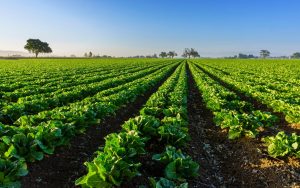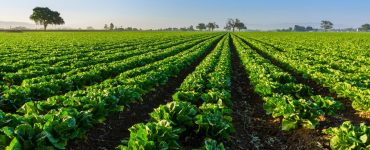In a world facing complex environmental challenges, it is crucial to explore sustainable practices that can ensure a healthy and secure food system for present and future generations. This guide aims to shed light on the concept of food sustainability, its significance, and the various aspects involved.

By delving into the environmental, social, and economic dimensions of food production, we will uncover the steps we can take to foster a more sustainable and resilient food future. So, let’s embark on this enlightening journey to understand the intricacies of food sustainability and explore practical ways to make a positive impact.
The Environmental Impact of Food Production
The relationship between food production and the environment is a crucial aspect of understanding food sustainability. Within this context, several subheadings help us grasp the multifaceted environmental challenges associated with food production.
Deforestation and Its Role in Unsustainable Agriculture
Deforestation, primarily driven by the expansion of agricultural land, has severe consequences for ecosystems and biodiversity. The clearing of forests disrupts delicate ecological balances, destroys habitats, and diminishes biodiversity. Understanding the link between deforestation and unsustainable agricultural practices is essential in addressing the environmental impact of food production.
The Effect of Chemicals and Pesticides on the Ecosystem
Chemicals and pesticides used in conventional farming have significant implications for the environment. These substances can contaminate soil, waterways, and ecosystems, leading to the depletion of beneficial organisms, including pollinators and natural pest control agents. Exploring the alternatives to chemical-intensive farming and promoting organic practices is vital for reducing the environmental burden of food production.
Soil Degradation and Its Impact on Food Sustainability
Soil degradation, including erosion, nutrient depletion, and soil compaction, poses a significant threat to food sustainability. Unsustainable farming practices, such as overuse of synthetic fertilizers and improper land management, accelerate soil degradation.
Highlighting the importance of soil health, promoting regenerative agricultural practices, and implementing soil conservation strategies are crucial steps in mitigating the environmental impact of food production.
Water Scarcity and the Need for Sustainable Irrigation Methods
Water scarcity is a pressing global issue, and agriculture is a significant consumer of water resources. Inefficient irrigation methods, such as flood irrigation, contribute to water wastage and depletion of freshwater sources. Exploring sustainable irrigation techniques, such as drip irrigation and precision agriculture, can help conserve water and ensure its equitable distribution, addressing the environmental challenges posed by food production.
The Social and Economic Aspects of Food Sustainability
Examining the social and economic dimensions of food sustainability is crucial in understanding the broader impact of our food systems on communities and economies. This section delves into various subheadings that shed light on these interconnected aspects.
Food Insecurity and the Role of Sustainable Agriculture
Food insecurity remains a persistent global issue, affecting millions of people. Sustainable agriculture plays a vital role in combating food insecurity by ensuring equitable access to nutritious food. By promoting diversified and resilient farming systems, supporting small-scale farmers, and implementing sustainable food production practices, we can address the social and economic disparities associated with food insecurity.
Poverty and Access to Nutritious Food
Poverty and food insecurity often go hand in hand. Limited financial resources can hinder access to nutritious and culturally appropriate food options. Enhancing economic opportunities for marginalized communities, promoting fair trade practices, and supporting local food systems can help alleviate poverty and improve access to healthy and sustainable food choices.
Fair Trade and its Contribution to Food Sustainability
Fair trade practices aim to ensure fair compensation, safe working conditions, and sustainable production methods for farmers and workers involved in the global food supply chain. By supporting fair trade initiatives and choosing products with fair trade certifications, consumers can contribute to a more equitable and sustainable food system.
Support for Local Farmers and Sustainable Food Systems
Local farmers play a vital role in promoting food sustainability. Supporting local agriculture helps reduce carbon emissions associated with long-distance transportation and strengthens regional food resilience. Initiatives such as farmers’ markets, community-supported agriculture (CSA), and farm-to-table programs foster direct connections between consumers and local producers, promoting social and economic well-being within communities.
Gender Equality and the Empowerment of Women in Agriculture
Recognizing the role of women in agriculture and empowering them is critical for achieving food sustainability and social equity. Women constitute a significant proportion of the agricultural workforce and contribute to food production and security. Promoting gender equality in access to resources, education, and decision-making processes empowers women and fosters more inclusive and sustainable food systems.
Sustainable Food Production Practices
Implementing sustainable food production practices is crucial for achieving food sustainability and minimizing the environmental impact of agriculture. This section explores various subheadings that highlight innovative approaches to sustainable food production.
Organic Farming: Benefits and Challenges
Organic farming utilizes natural methods and avoids synthetic chemicals, promoting soil health, biodiversity, and ecosystem balance. By relying on organic fertilizers, crop rotation, and biological pest control, organic farming reduces environmental pollution and protects the health of farmers and consumers.
However, organic farming also presents challenges such as lower yields and higher production costs, requiring careful management and support for farmers transitioning to organic practices.
Permaculture: Designing Sustainable Food Systems
Permaculture is a design system that integrates sustainable agriculture, ecology, and community development. By observing natural patterns and maximizing resource efficiency, permaculture aims to create self-sustaining and resilient food systems. Emphasizing regenerative practices, agroforestry, and diverse polycultures, permaculture offers innovative solutions for sustainable food production.
Agroforestry: Combining Agriculture and Forestry for Sustainability
Agroforestry is a land management approach that combines trees, crops, and livestock in a mutually beneficial system. Trees provide shade, prevent soil erosion, and enhance biodiversity, while crops and livestock benefit from improved microclimates and nutrient cycling. Agroforestry practices offer multiple environmental and economic benefits, including carbon sequestration, improved water management, and diversified income streams for farmers.
Aquaponics and Hydroponics: Innovative Approaches to Food Production
Aquaponics and hydroponics are soilless farming techniques that use water-based systems to cultivate plants. Aquaponics combines fish farming (aquaculture) with hydroponics, where fish waste provides nutrients for plants, and plants filter the water for the fish.
Hydroponics involves growing plants directly in nutrient-rich water solutions. These innovative methods require less land, conserve water, and can be practiced in urban areas, offering sustainable alternatives for food production.
Conservation Agriculture: Balancing Productivity and Environmental Protection
Conservation agriculture emphasizes minimum soil disturbance, crop rotation, and cover cropping to improve soil health, conserve moisture, and reduce erosion. By reducing the use of machinery, conserving water, and maintaining soil structure, conservation agriculture enhances productivity while minimizing the environmental impact of farming. This approach fosters long-term sustainability by promoting soil conservation and climate resilience.
Food Waste and Loss
Addressing the issue of food waste and loss is crucial in achieving food sustainability and reducing the strain on resources. This section explores various subheadings that shed light on the magnitude of food waste and loss and strategies to mitigate this problem.
The Impact of Food Waste on the Environment and Economy
Food waste not only squanders valuable resources but also contributes to environmental degradation. When food ends up in landfills, it produces methane, a potent greenhouse gas. Additionally, food waste represents a significant economic loss, with implications for food security and economic stability. Understanding the environmental and economic consequences of food waste underscores the importance of finding effective solutions.
Causes of Food Waste and Loss throughout the Supply Chain
Food waste and loss occur at various stages of the supply chain, from production to consumption. Factors such as inefficient harvesting practices, inadequate storage and transportation, and market demand fluctuations contribute to food waste. Examining these causes helps identify critical intervention points and develop targeted strategies to reduce waste and loss.
Strategies to Reduce Food Waste at the Consumer Level
Consumers play a significant role in minimizing food waste. Simple habits such as proper meal planning, smart shopping, and effective food storage can significantly reduce household food waste. Moreover, creative approaches such as composting, using leftovers, and sharing excess food with community organizations can contribute to waste reduction efforts.
Food Recovery Initiatives and Redistribution Programs
Food recovery initiatives aim to rescue surplus food from being wasted and redirect it to those in need. Collaborations between food retailers, restaurants, and food banks facilitate the collection and redistribution of edible food that would otherwise go to waste. These programs not only address food insecurity but also help mitigate the environmental impact of food waste.
Creative Solutions for Upcycling Food Waste
Upcycling food waste involves transforming food scraps or by-products into valuable products. Examples include creating nutrient-rich compost, producing bioenergy through anaerobic digestion, or developing innovative food products from ingredients that would typically be discarded. Embracing these creative solutions offers opportunities to reduce waste and unlock the hidden value in food resources.
The Role of Consumers in Promoting Food Sustainability
Consumers play a crucial role in driving change and promoting food sustainability. By making informed choices and adopting sustainable food practices, individuals have the power to influence the entire food system. This section explores various subheadings that highlight the significant role consumers can play in creating a more sustainable food future.
Making Informed Choices: Understanding Labels and Certifications
Consumers can make a positive impact by understanding and utilizing food labels and certifications. Labels such as organic, fair trade, and locally sourced provide valuable information about the production methods, social and environmental considerations, and the origin of the food. By supporting products with transparent and trustworthy labels, consumers can encourage sustainable practices and promote greater transparency in the food industry.
Minimizing Food Waste at Home: Tips and Recipes
One of the most effective ways consumers can contribute to food sustainability is by minimizing food waste at home. Adopting mindful shopping habits, proper storage techniques, and creative ways to use leftovers can significantly reduce food waste. Sharing practical tips, recipes, and meal planning strategies empowers consumers to make the most of their food resources and minimize waste.
Supporting Local and Sustainable Food Systems
Consumers have the power to support local farmers and sustainable food systems. Choosing locally sourced products reduces the carbon footprint associated with transportation and supports the local economy. Moreover, supporting sustainable farming practices, such as organic or regenerative agriculture, helps promote ecological balance and soil health. By actively seeking out and purchasing from local and sustainable food sources, consumers contribute to a more resilient and sustainable food system.
Advocacy and Engagement: Promoting Change in the Food Industry
Consumers can become advocates for food sustainability by engaging with policymakers, businesses, and community organizations. Raising awareness about the importance of sustainable food practices, supporting initiatives for policy changes, and demanding transparency and accountability from food companies can drive positive change. Consumer voices have the potential to shape the practices and policies of the food industry, fostering a more sustainable and responsible approach.
Building Sustainable Food Habits for Future Generations
Educating and engaging children and young adults in sustainable food practices is essential for building a sustainable future. By instilling values of environmental stewardship, mindful consumption, and responsible food choices, we can empower future generations to make sustainable decisions. Encouraging school gardens, incorporating sustainability education in curricula, and involving youth in food-related activities can help shape their understanding and commitment to food sustainability.
Conclusion
This article has equipped us with a deep understanding of the importance of sustainable food practices and their far-reaching implications. By recognizing the environmental impact of food production, the social and economic aspects of food sustainability, sustainable food production practices, the issue of food waste and loss, and the pivotal role of consumers, we are better prepared to make informed choices and contribute to a more sustainable future.









